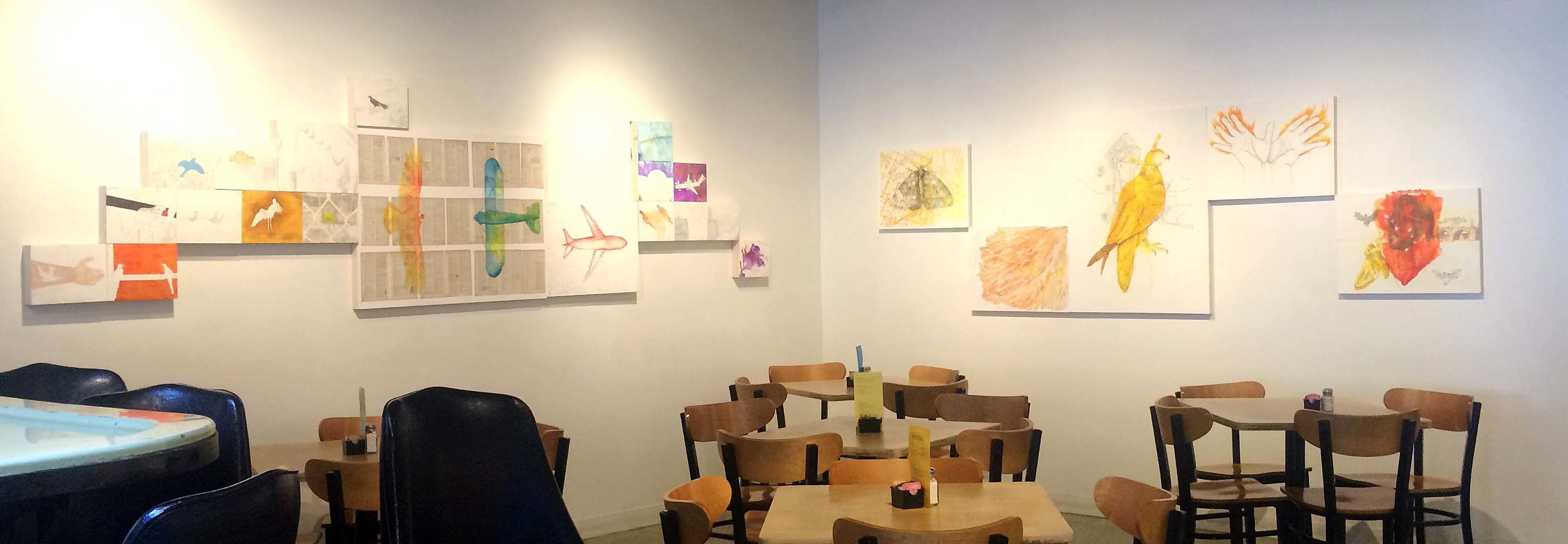
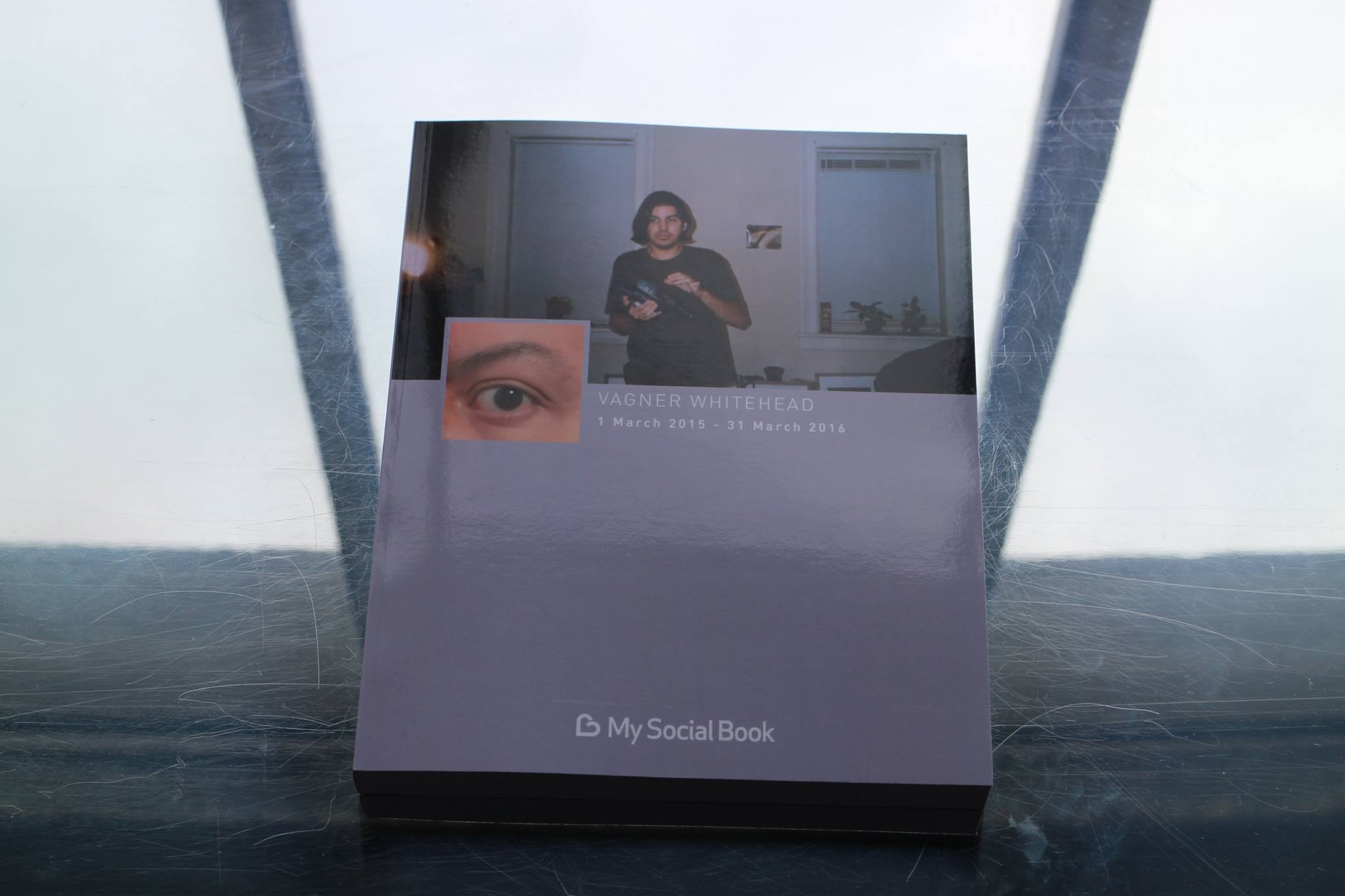
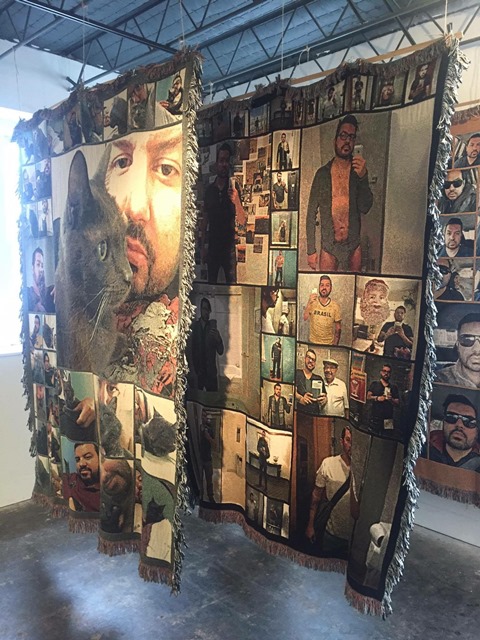

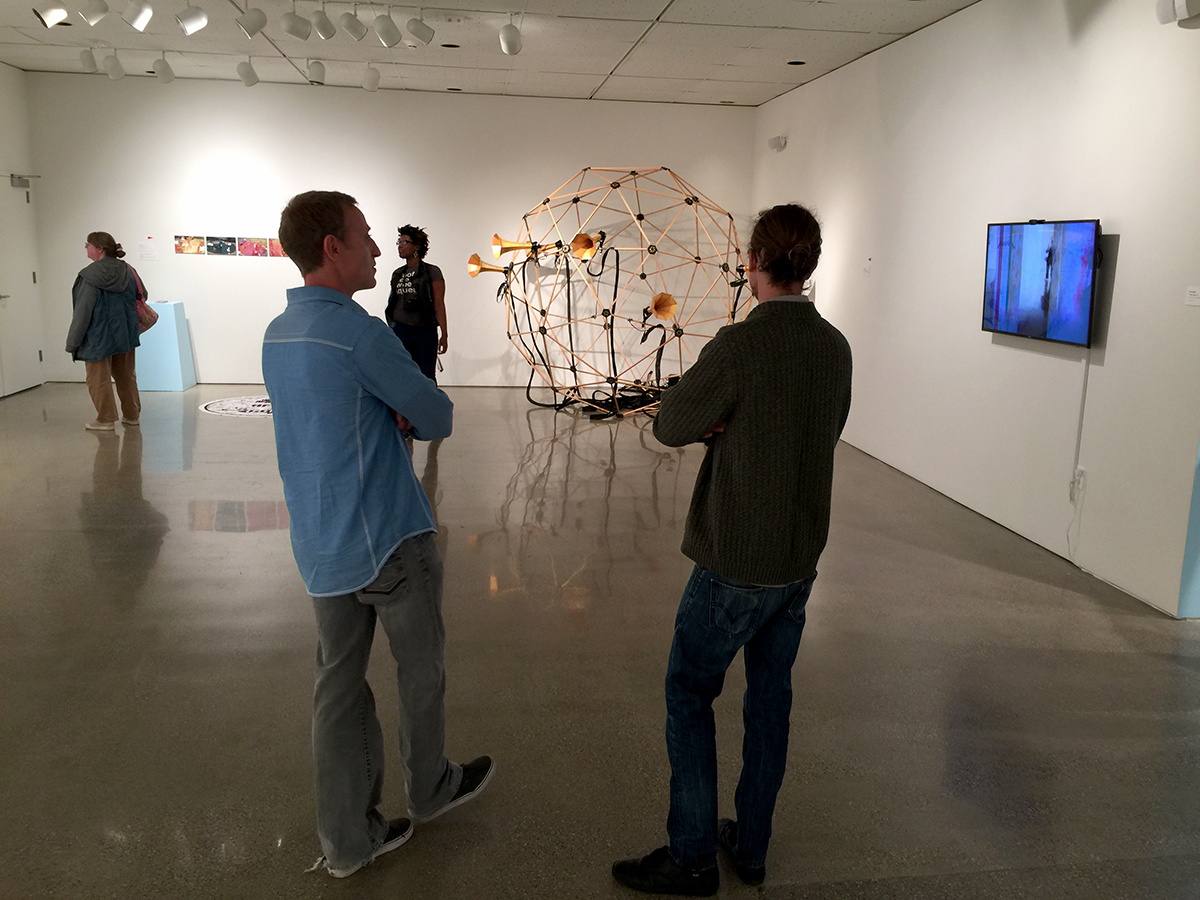
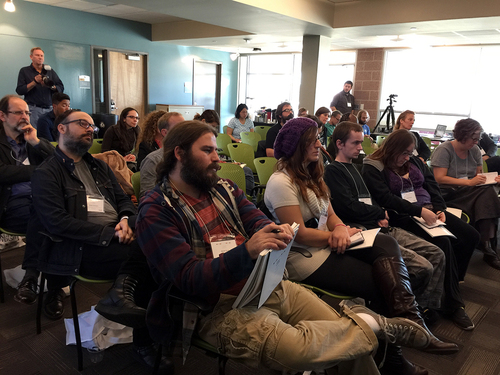
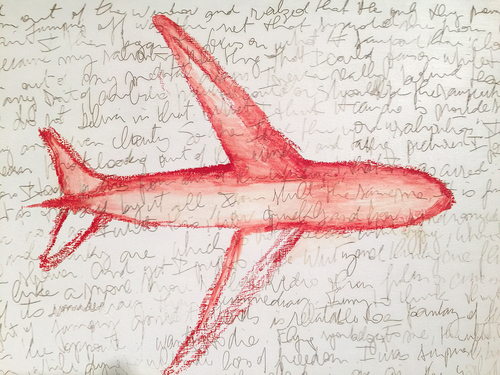
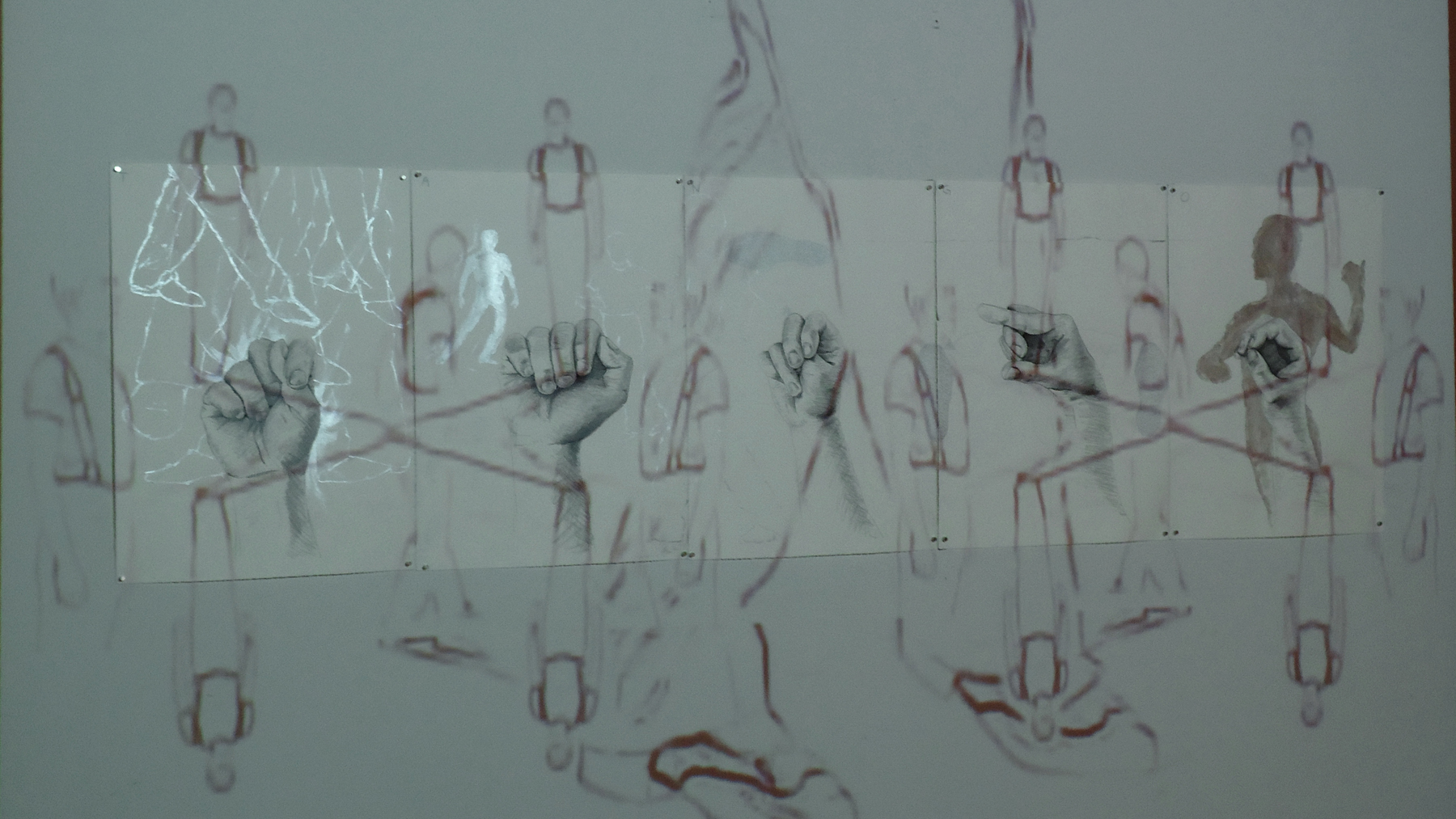
Artist Statement (2015-17)
Imagine a series of lines, different lines, of different thicknesses and lengths, different luminosities and even resonances, varied shaped and trajectories. These lines live around each other in constant expansion, movement, and flux, and their relationship to one another intersect, parallel, attract, repulse, tangle, cut, and merge with one another in an unrecognizable pattern; this process is constant and infinite. If we consider one of these lines to represent time, or space, or place, or a body, or bodies, or a history, or histories, or a technology, or technologies, or medium, or media, or all of these things, and if someone, or anyone, or oneself, had the capacity of culling them together, for whatever purpose, to arrange and harmonize them, to disrupt and construct, as a means of making sense of them all, then you may get a glimpse to what I believe my art practice to be and my role in the world. I am both the conductor and the conduit. My limitation is my reach and my lifespan; a sort of multilane road, with many destinations. My imagination is boundless, only restricted by my focus or bias. It is up to me to make sense of all these things that intersect at my being, and allowing them to reveal to me their multitude of possibilities, or celebrate the confounding they provide. This ability is present in each one of us.
Exhibitions
My recent activities illustrate well how my research/creative endeavors manifest themselves. A common thread they all carry is the connecting disparate elements into a continuous venue or form of expression. While creating art constitutes the main vein of my production, I also pursue writing and curatorial projects; for me, they relate in process, or translating, rearranging, and reconsidering the everyday flood of information, while looking back, sideways, and forward.
Writing for me has always been a simultaneously expressive and abstract experience. Most of my writing is done in English, which is not my first language. At times words and text(s) provide a visual or auditory stimulation before a cognitive understanding takes place. As such, I find words and language as malleable as any other medium I may employ in my art-making process.
My most recent body of work, Flight/Risk (2015-2016), consists of 80 plus visually reduced lens-based images that are laser-etched onto a gesso board; their dimensions vary, from 8x10 inches, to 30x40 inches. This is an ongoing project, where I aim to add more pieces in the coming years. The source images come from photographs taken with my iPhone, either spontaneous (I see something that touches me in some way), or sought after (I place myself in contexts where visual stimulation is expected). These images are digitally manipulated with computer software to resemble intricate line drawings. At times I also draw directly with the computer through a tablet, and/or combine these modes of image-making into one or more pictorial plane. Once this process is completed, I prepare a gesso board to be laser-etched. I specifically choose to leave brushstrokes visible, rather than create a seamless surface. Once the images are lasered onto the gesso surface, I apply some kind of hand-made manipulation, such as paint, pencils, writing, doodles, and collage. The variety of mark-making allows me to bring forth some aspects of the work, while concealing or deemphasizing others. The first showing of this body of work (October 2015) presented these boards in distinct parallel lines, organized by size, intersection at a corner of the gallery, but not chronologically presented (a mix of random arrangement and visual organization). This installation also included one large piece leaning against the wall, at its “end” (if we consider sentences being read left to right), where two looped video projections implied unfinished fluidity and continuity. With this display I aimed to present parallel but distinct modes of thinking. For me each component represents a still image on a filmstrip, or a word in a sentence, with multiple scenes/sentences or thoughts existing at one given time, and many reoccurring themes (such as wings, clouds, and chain link fence). Thematically speaking, as the title may imply, I am after three potentially related but independently existing notions: an inability to take flight, a fearful compulsion to take risks, and a desire to escape. While each image means something to me in a very precise manner (whether a life-death situation, or a peculiar but unremarkable moment in time), I choose to hold their mystery close to me, and allow whoever encounters them to make up their own narratives. In the next iteration of this work, which will incorporate new pieces into the mix, I will rearrange the pieces into asymmetrical clusters (salon style but not in a grid, more amoeba-like) and introduce new projected components. I am currently negotiating with a few spaces and hope to show these works again in 2016.
Curatorial
My most recent curatorial project, which I worked with a colleague of mine, Colleen Ludwig, took over two years to complete. I unfortunately do not pursue curatorial projects as often as I would like to, but I do see them very similarly to my art practice. Each artist’s work becomes an essential component for a conceptual, multidimensional collage. Collaborating with another creative mind has its challenges, but also provides a whole new set of information that enriches the entire process. From the onset, I wanted this exhibition to attract regional talent that employs new media art and technology in their creative process. I also wanted to as an opportunity to build up the new media art community around where I live. As you may know, artist educators working with technology often lead very isolated practices, which sometimes gets masked by the perceived closeness of the internet and social media (in 2014 I met more new media artists from Michigan in Dubai than I normally encounter while home). Once my collaborator entered the picture, we realized that limiting the work to existing boundaries would disadvantage the experience; we decided to create our own geography, as a starting point. The theme and title of the show arose from many conversations about the state of art, our current interests in technology, our understanding of multicultural spaces, our attraction to shifting borders, and our own work. We titled the project Stimulus Response Affect: New Media Art in the Greater Lakes Region, because we both believe that the gap between physical touch and mental cognition provides a fertile ground for art. The final exhibition presented 11 works of art, made by 15 artists from six states/provinces and two countries. It also incorporated a range of new media art works, such as sound sculpture, code-based compositions, augment reality, responsive video, immersive interactive installation, and electronic games. Gallery visitors were encouraged to interact, play, input and respond to all works in the gallery space. Because quite a few pieces contained generative aspects, people spent a considerable time with each work at the gallery, which also allowed for many conversations around each work.
Alongside the exhibition, we authored and published a catalogue that features images and statements from the curators and participating artists. We wanted to make sure the experience shared by all would have a permanent document. Because we wanted to take advantage that all artists would come to the gallery to install their art work, we decided to organize an accompanying symposium the day after the opening reception. Co-sponsored by the New Media Caucus (who hosted the live streaming and blogging via the Hub), this day-long event allowed for artists to present their work and engage with the audience (beyond the gallery interaction). With approximately 60 attendants (students, faculty, artists, members of the university and art community), this symposium was organized in four thematic sessions: Play, Response, and Learning; Text, Error Message, Codification, Reverb; Malleable Architecture, Space and Time; and Augmented Reality, Conflict and Participation. Each artist spoke about their work for 20 minutes; Colleen and I served as moderators, and for each session we allowed 30 minutes of question and answer time. The response from the symposium participants was very gratifying. The artists, most of whom had met for the first time through this event, were grateful for the opportunity to present their work in an environment that is new media-friendly, and make meaningful connections with other artists a few driving hours away from their home. The video streaming was recorded and it is now archived here (please fast forward through the meal breaks): http://www.newmediacaucus.org/stimulus-response-affect-symposium-live-stream/. We will be publishing follow-up blog entries in the weeks to come.
Writing
This past summer I was invited to become a contributor to ∞ Mile (Infinite Mile), a Detroit-based artist-run publication. A rift on the famed 8 Mile Road that divides Detroit and its northern suburb (I happen to live on the equivalent of 8.5 mile), this publication has been gaining an important presence in the regional art scene. I have undertaken many writing ventures in the past; I was a contributing writer for the Barcelona-based magazine Art Signal, and have run a few blogs on my own, such as http://art-sight.blogspot.com (2009-2012), and http://e-terview.blogspot.com (2010-2011). Much like my art practice, I find writing to be another form of self-expression, where I can present the intersections that make up my point of view. My first piece for ∞ Mile, titled Action Verb Tense (November 2015), unravels my history with the English language, and the changes in the language itself, from my foreign perspective. This article can be read online, though a printed version is available in their yearly anthology publication: http://infinitemiledetroit.com/Action_Verb_Tense.html. I am looking to my future contributions to ∞ Mile. Their format allows for both visual and written essays, which will perfectly fit with my interests.
A portion of my “canned” artist statement reads as follow:
Vagner works with time-based and traditional media. He employs original, appropriated and researched multilingual texts, found and created imagery, their translations and his interpretations as allegorical devices that, through his art, reframe trans-cultural experiences vis-à-vis mass media and communication technologies.
I have been using this short paragraph, with variations, for the last 15 years, which for me attests to the fact that I am consistent in my approach to art-making. But should one examine what I have produced in this timeframe, one will easily notice a progression and expansion of what I express and achieve with and through my works. Being aware of my practice, while being flexible, allows me to continue making art from a place of knowledge, without it becoming a crutch or schtick. As long as I have the ability to absorb, filter, and express my life’s experiences I will continue to make art that speak of my times, and share it with my contemporaries.